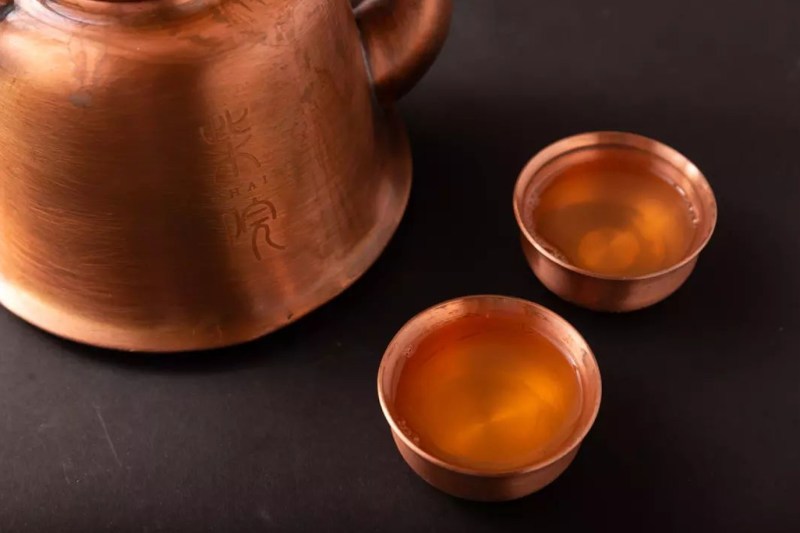While Chinese cuisine isn’t traditionally known for cocktails, a new style of modern Chinese restaurants in America is trying to change that dynamic. Sophisticated with a focus on elegant presentation and diverse flavors, this wave of contemporary Chinese restaurants is bringing the taste of modern China to America — and that includes Chinese drinks.

To showcase this new style, enter Chai in New York City, one of the best examples of these modern Chinese eateries. A Beijing-inspired restaurant in Manhattan’s Theater District, Chai’s dining area is designed to resemble a Siheyuan, a traditional Chinese housing unit that features buildings surrounding a courtyard. Much of the food at Chai is hyper-regional, with modern twists on Northern Chinese classics like Zha Jiang Mian, a dry noodle mixed with salty and slightly sweet dark bean sauce accented with an assortment of bright vegetable garnishes. That same care and focus on technique and ingredients also extends to their cocktail program, showcased in Chai’s brand new 6-seat bar on the second-floor entrance. From the Chaitini to nonalcoholic Beijing Style Pear Soup served hot or cold, these beverages push the envelope for a new wave of modern Chinese drinks and cocktails.
What are modern Chinese cocktails?

While Chinese cuisine traditionally features rice liquors and other grain alcohols, mixing those liquors into cocktails is primarily a modern trend. However, the cocktail program at Chai is attempting to change that. According to Christian Ramos, a mixologist with nine years of experience and the head of Chai’s cocktail program, this movement of creating Chinese cocktails is just beginning.
“While there isn’t a strong culture just yet, I think the younger generation can greatly appreciate a good cocktail,” said Ramos. “Presentation is the key that gets people excited. A lot of the food at Chai has a spicy kick. So going with that, the idea was that the cocktails would have a cooling effect for the most part. And I think we’ve succeed on that. A great combination would be the Chicken with Szechuan Pepper and the Chai’s Story. For me, that’s a textbook example of contrasting flavors.”
One of the unique elements of this modern Chinese cocktail movement is the blend of the new with the old. Chinese cuisine has thousands of years of rich history. Yet, cocktails featuring those Asian ingredients are primarily new or still being explored. This dynamic creates a compelling partnership that’s enticing for those passionate about cocktails. However, in Ramos’s opinion, there can also be pitfalls. According to Ramos, the key to creating something special is understanding and respecting the culture.
“With social media, there can be a lot of flair and tricks,” said Ramos. “But that’s going to lead to an unsatisfactory experience ultimately if the flavor or cultural respect isn’t there. Do the research, and hone in on a single part of the culture that you can express respectfully. Staying in tune with the Chinese holiday schedule is also a good way of sensing things. The holidays, like all other holidays, signify important cultural moments.”
The Ingredients

So what kind of ingredients are used in Chai’s cocktails and beverages? Since tea is a massive component of Chinese cuisine, Ramos was keen to utilize and experiment with the drink. He was given a full creative license and “told to go with my wildest ideas.” One of the most popular tea cocktails he created is the Hutong, which contains jasmine green tea, whiskey, lychee purée, ginger liquor, and orange and lemon juice.
Ramos was also eager to experiment and create with one of the classic liquors in China — baijiu. This sorghum-based liquor is famous for its high ABV content, which generally hovers around 56 percent. Traditionally, baijiu is consumed in tiny cups without any mixers or ice in copious amounts at large Chinese celebratory banquets such as wedding parties. The liquor has a strong, floral fragrance combined with an alcohol punch that makes vodka or sake seem tame by comparison. Excited by this ingredient, Ramos created the Hou Hai, an elixir of baijiu with pineapple juice and lychee purée, and perhaps the signature drink of Chai,
What’s interesting about the drink menu at Chai is that the same creativity has also extended to nonalcoholic drinks. Take the popular aforementioned Beijing Style Pear Soup. This lightly sweet, slightly thick drink of pear and white fungus is incredibly refreshing, especially when enjoyed with some of the more intensely flavored items on Chai’s menu.
Lychee Margarita

“At the moment, lychee and green tea are my go-to ingredients in terms of Chinese influences, said Ramos. “Staying with seasonal ingredients that match the Chinese crop season is a great way to honor the culture.”
Want to replicate these delicious flavors at home? Try this amazing drink recipe:
Ingredients:
- 1 1/2 ounces Casamigos
- 1/4 ounce triple sec
- 3/4 ounce lime juice
- 1 ounce lychee purée
Method:
- Prepare the lychee purée by blending 1 can lychee.
- Mix together with the remaining ingredients in a mixing tin.
- Strain into a rocks glass over ice.
Chinese drinks and cocktails might not be the first thing you think of when it comes to Chinese cuisine, but there’s a wealth of incredible



